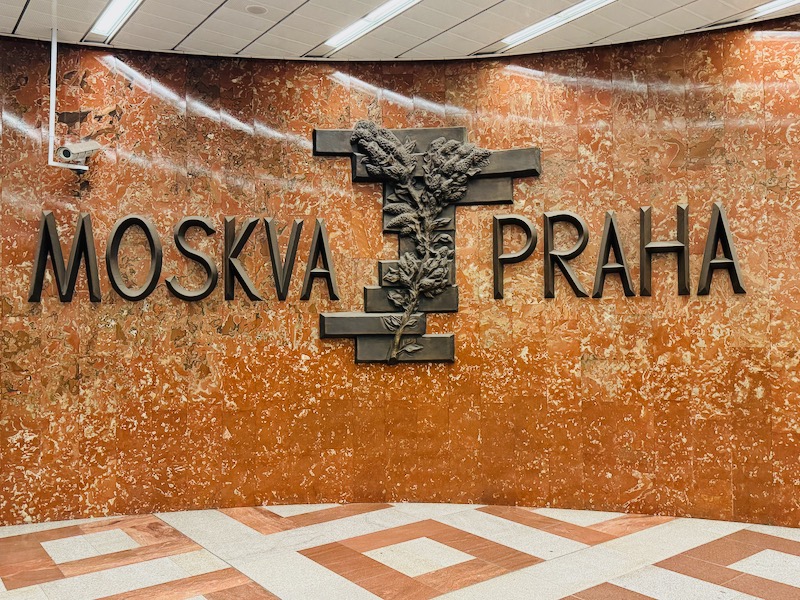
If you enjoy Cold War history, a ride on the Prague metro system is a must, a public transit network exposing lingering traces of the Communist era.
Riding On The Soviet-Era Prague Metro – A Photo Essay
Though it had been planned since 1898, construction on the Prague metro system began in the 1960s as the city grew and the surge in cars created unbearable snarls in traffic.
Some stations you should visit include:
- Anděl, which includes the Moskva – Praha sign and eight Soviet era reliefs
- The station opened in 1985 as an act of “Czechoslovak-Soviet friendship” and was built by Soviet engineers, architects, and artists
- As part of the “cultural exchange,” Czechoslovak engineers designed and built a metro station in Moscow
- This station used to be called Moskevska, but was changed to Andel after the fall of communism
- When the name of the station changed to Andel in 1990, the eight panels were removed
- However, they returned after only a few months to preserve some memories of the communist period
- Malostranská, which includes a replica of a Baroque statue by Matyáš Brau and a unique golden key and sun at the station entrance
- Staroměstská, which is blood red in color as a remembrance of the murders of the 27 Czech noblemen in the Estates Uprising of 1621
- Náměstí Míra, the deepest station (52 meters or 170 feet)
- Karlovo, which includes a Soviet-era mural that I searched high and low for, but could not find…
Enjoy the photos below:
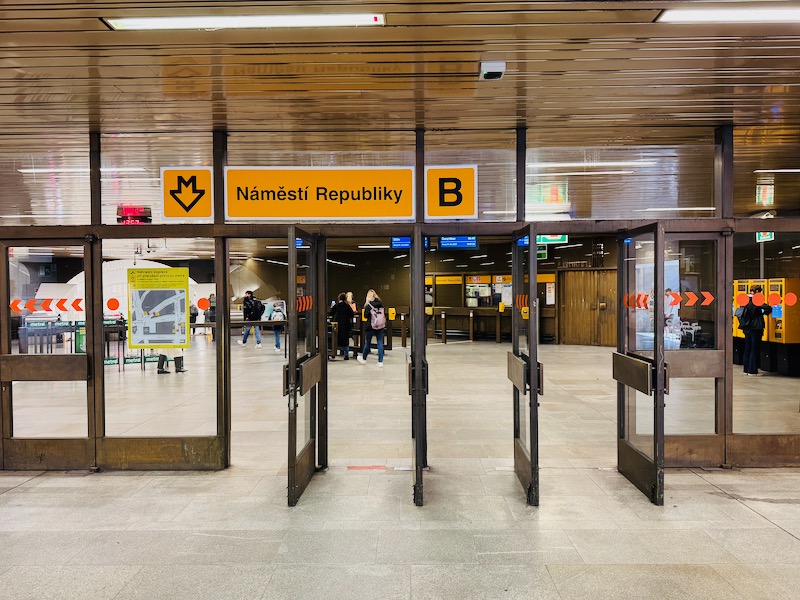

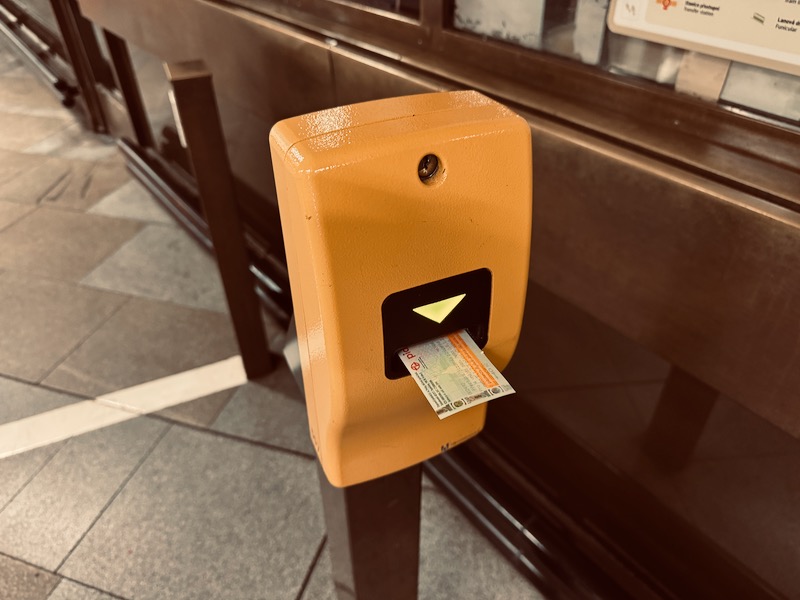
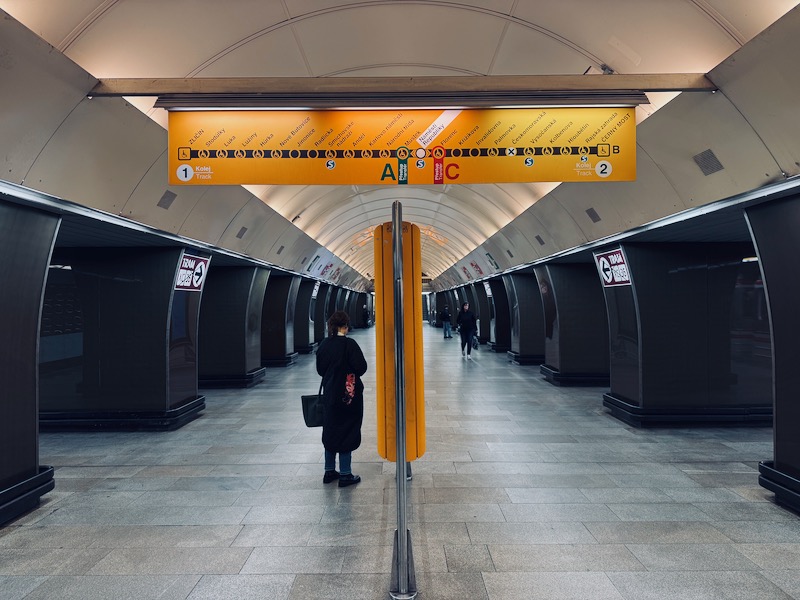





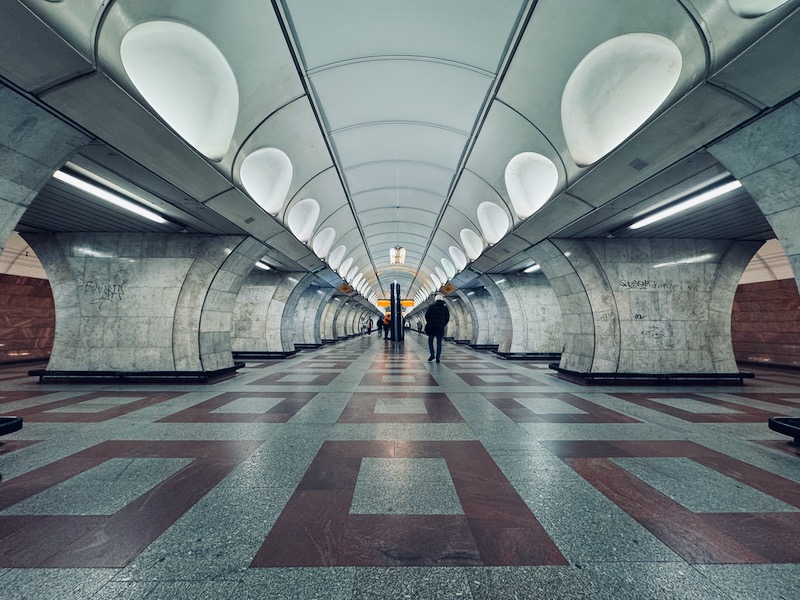

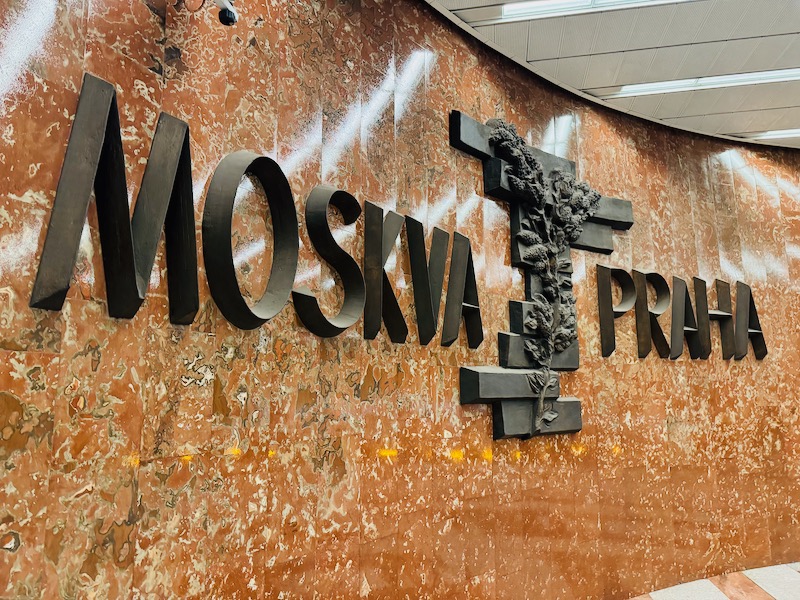
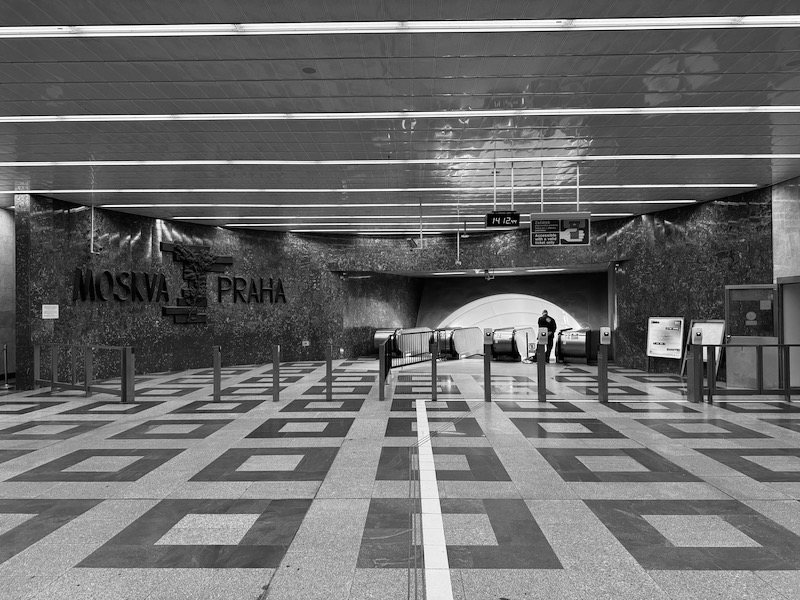
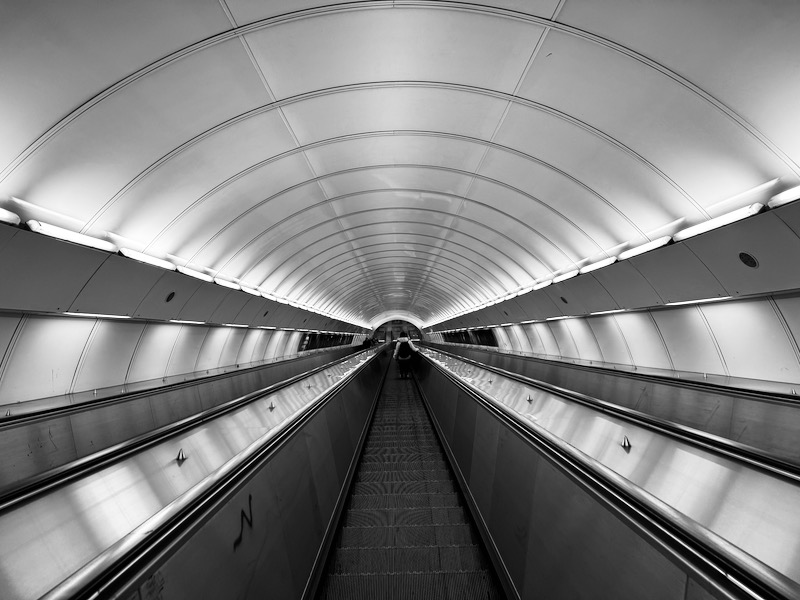
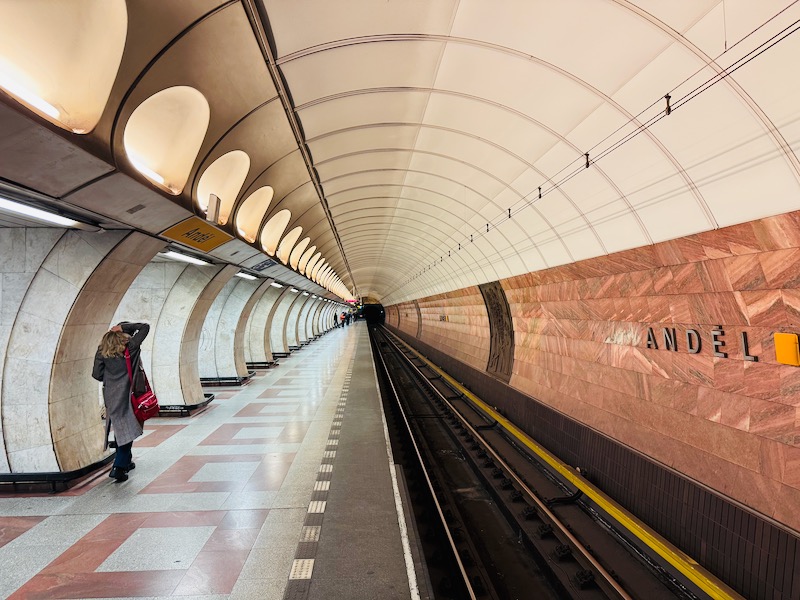


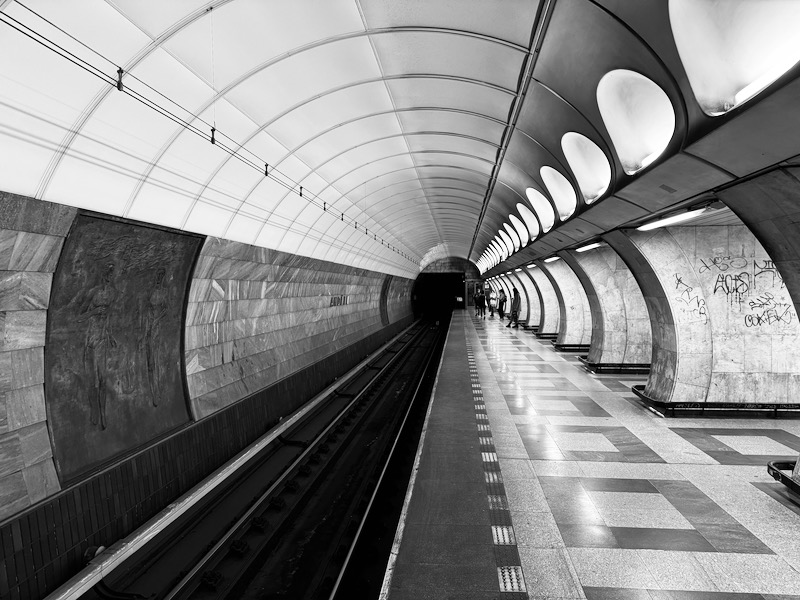


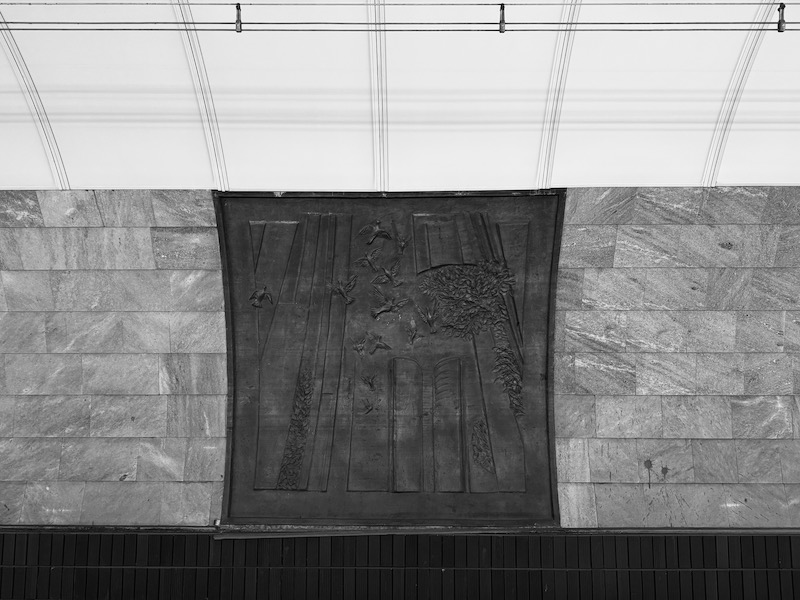
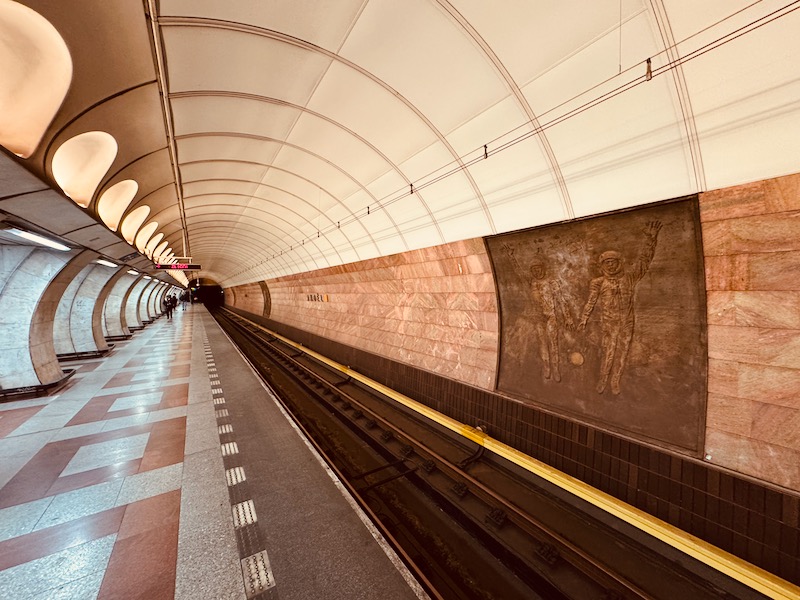

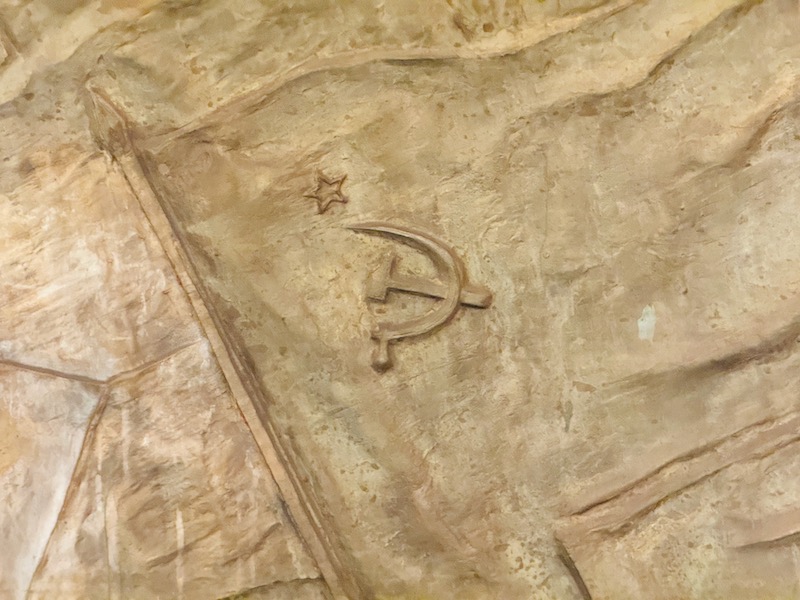
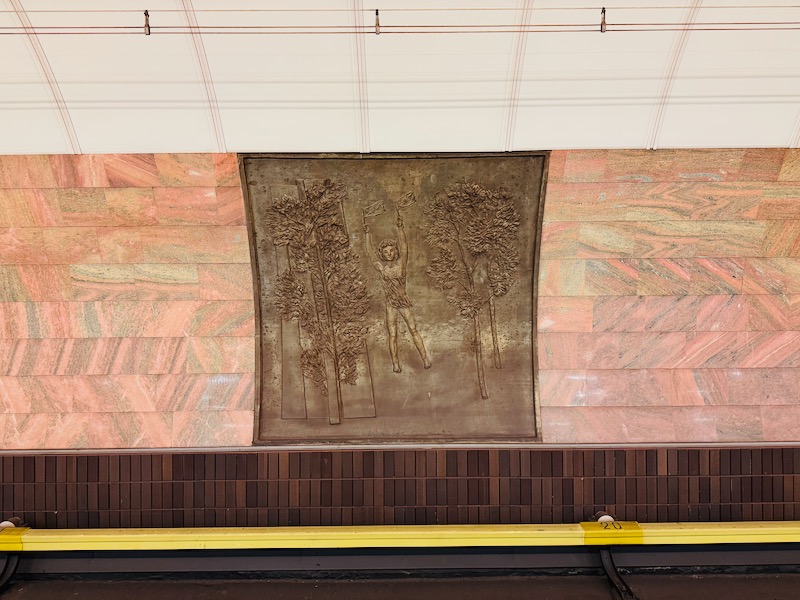









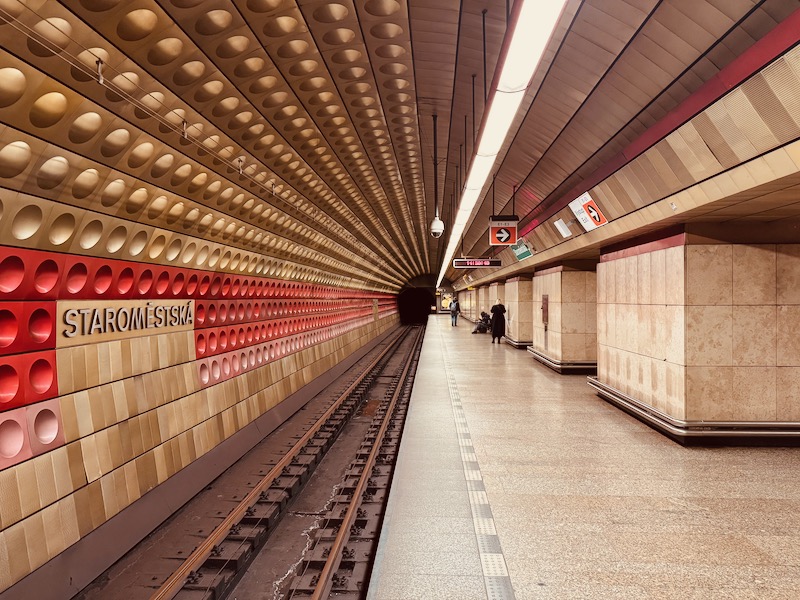






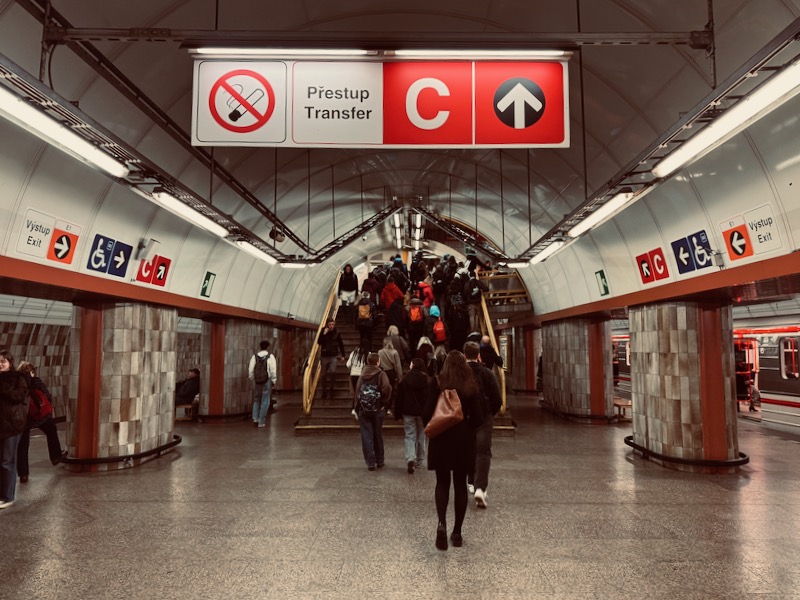
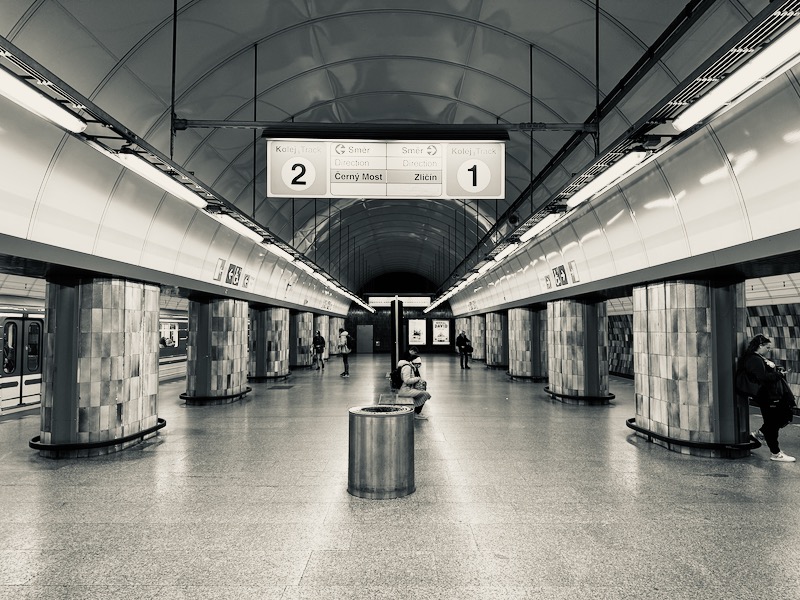

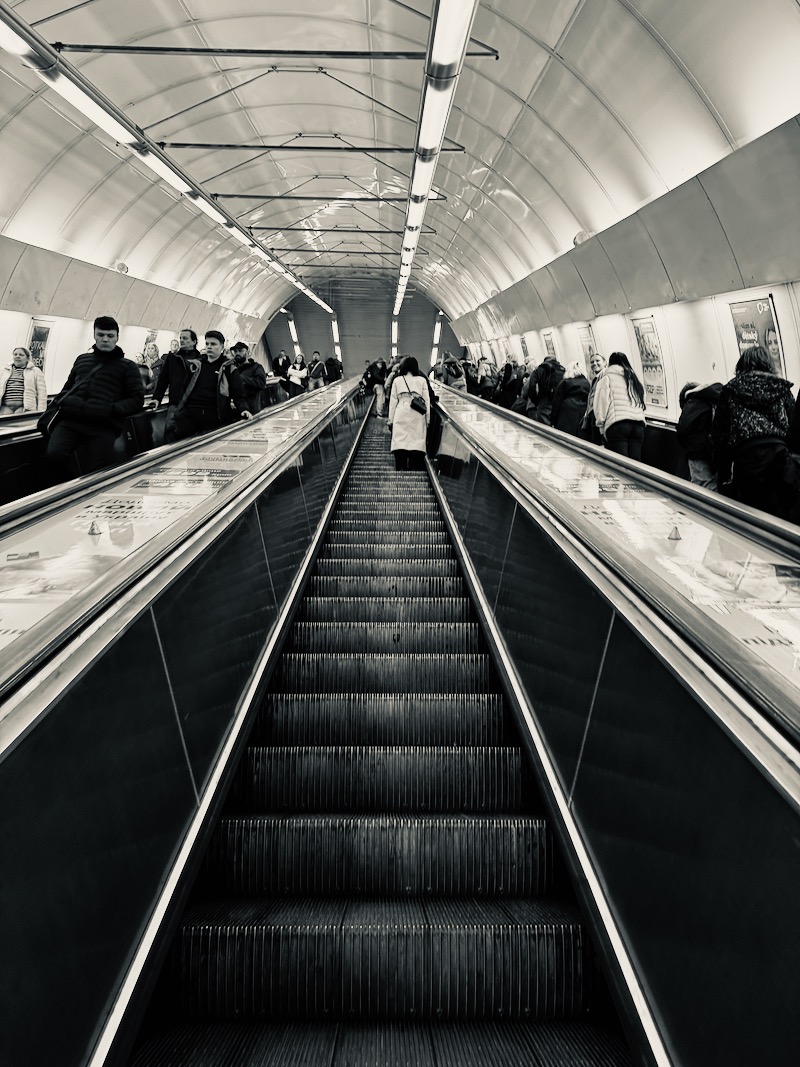




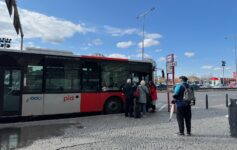
If you only had time to visit one (or two), is there any you would recommend?
There aren’t any that stand out the same way as Stockholm or Milan, but rather the three routes follow certain common architectural themes in terms of color and materials. Matthew pretty much covered the highlights here 🙂
Line A has the differently colored and patterned aluminium tiles representing the stations’ locations or names. Náměstí Míru is a fun visit thanks to the super long escalator (2 min 16 sec). Jiřího z Poděbrad has recently been returned to its original visual glory.
Anděl on line B stands out because of the Soviet architectural influence. Karlovo náměstí and Jinonice have unique glass tiling, both were recently renovated. Můstek (A/B) has remnants of a 15th century bridge.
Line C is pretty low key in comparison, though the core section has marble and granite walls. Vyšehrad is interesting because it’s inside a bridge that spans a valley, and Střížkov stands out for its post-2000 needless extravagance.
great pictures. the Soviets built beautiful subway stations in multiple cities
Great photos; I visited Prague many years ago. It’s always interesting to see old Soviet metros; I’ve seen St. Petersburg and Moscow’s. My goal over the next few years is to get to Baku, Tashkent, and Almaty to see theres. Hopefully to Kiev, too.
correction: ‘theirs’ — I hadn’t had my coffee
Matthew does the best photo essays! (And the hottest selfies.)
Great photos, Matthew. I’ve never seen or heard about this before, so it was a great introduction.